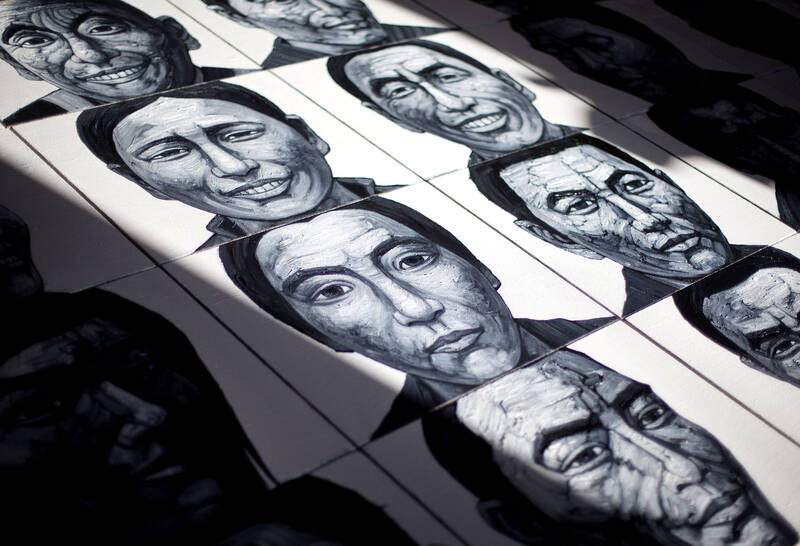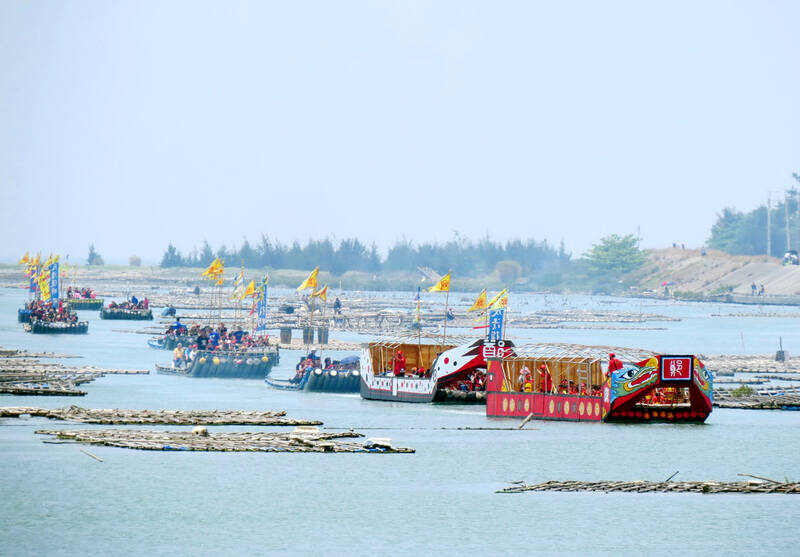Exploring the jangling corners of the Internet the other day, trawling those spaces where weird enthusiasts mount festschrifts for dead ideas, I came across the absurd claim that the northern Philippines had been a Chinese kingdom in the 15th century. Reality tells us that Cabaloan was an independent Austronesian polity that conducted its own foreign policy, including missions to China during that period. We know this, ironically, from the Chinese records referring to it as Fengjiaxilan (馮嘉施蘭).
This would be no more than trivia, if China did not have a history of reconstructing the past in service to its expansionism. For example, in recent years, as an excellent piece by Victoria Jones in the Diplomat noted last month, China has exploited the vague existence of the mountain kingdom of Zhangzhung in what is now Tibet to develop a claim that Tibetans are Chinese.
“China wants to link Tibetan culture and religion to Zhangzhung, thereby peeling it away from its Indian roots,” Jones wrote. In 2013, Jones says, China set up a program, run by the Central Propaganda Department, to develop the idea, which is used not only to erase Tibetan culture, but also advance Chinese designs on Indian territory.

Photo: AP
In a few years foreigners visiting Tibet will be dutifully and often unknowingly repeating this propaganda, and some idiot history journal out there will have a special issue devoted to the history of that imagined kingdom, with half a dozen earnest fantasies from Chinese “scholars” posing as research articles. I know of one case of that already, with another invented Chinese claim.
Asia is littered with possibilities, if you are a Chinese expansionist. Readers are of course aware of Ming Dynasty loyalist and military commander Koxinga, also known as Cheng Cheng-kung (鄭成功), who brought his rearguard actions against the Ming to Taiwan, and with him, support for a Chinese claim. But he was not the only escapee from the Ming collapse who set up a kingdom elsewhere.
In Vietnam on the Gulf of Thailand a Cantonese (or perhaps Hakka) named Mo Jiu (鄚玖), fleeing the Ming debacle, set up a city-state, now called Ha Tien. During its heyday in the 18th century his heirs played off the powerful states around the port to establish control over a section of the vast Mekong Delta that extended into what is now Cambodia. That kingdom was heavily populated by Chinese.

Photo: Tsai Wen-chu, Taipei Times
Across the South China Sea, towards the end of that era a Hakka state called the Lanfang Republic was established in Borneo by Chinese laborers brought in by the ruling Sultans. Quite democratic, it had a citizen militia for an army and an elected president. It was destroyed by the Dutch in the 19th century.
Ominously, the Wiki page on it refers to it as a “Tributary State of Qing China.” Paving the way for some future act of imperial overstretch? Recall that Laos and Cambodia are already slowly becoming protectorates of China, and Cambodia nurses old claims to the area we think of as southern Vietnam.
MANCHU EMPIRE
Between 1644, when the Ming fell to the invading Manchus, and 1911, when the Manchus fell, there was no China. It was a holding of the Manchus, part of their vast empire. That basic fact of history has been disappeared by the way the historiography of China has been shaped by Chinese expansionist propaganda.
In an ideal world, “Qing China” would have a meaning precisely parallel to that of “British India.” Instead, thanks to the way the propaganda of China has shaped the discourse on it, it is common to refer to “Qing China” and mean “China.” Imagine referring to “British India” and meaning “Britain!”
Meanwhile the term “Qing” erases the term “Manchu” and incorporates the Manchu empire into the stream of history that the People’s Republic of China (PRC) uses to underpin its expansion.
This Sinification of people and places to make them accessible to Chinese expansionism has its roots in the debates at the end of the Manchu empire.
Thinkers in China began to imagine how the coming Chinese state might inflate itself out to the old Manchu frontiers, but foundered on the problem of defining who was “Chinese.” As scholar Emma Teng noted in Eurasian: Mixed identities in the United States, China and Hong Kong, 1842–1943, nationalists had called for racial purification in ejecting the non-Chinese Manchus from China prior to the end of the Manchu empire.
This led to a debate among Chinese nationalists over what “race” meant in the Chinese context. If “pure Chinese” meant only the people then viewed as “Han,” then the new Chinese state would be smaller than the Ming empire, but if many different ethnic groups were identified as “Chinese” or better yet “Han,” then the new state could be coterminous with the old empire.
Hence, the “inclusive” racial idea of “the Chinese people” was developed to include Tibetans, Manchus and other non-Chinese peoples and of course, their territories. These people then eventually became Han, because the whole idea of “the Chinese people” is inherently assimilationist: even for the “inclusive” nationalists, “Chinese” ultimately meant “Han.” Inclusivism was simply Sun Yat-sen’s (孫逸仙) temporary move to rally the disparate peoples of the Manchu empire to his cause before drowning them in the sea of Han-ness.
Thanks to this nationalist move and subsequent propagandizing, often reproduced in serious writing, as scholar Dru Gladney once put it: “Few have questioned how the Han became the 94-percent majority of China.”
Today we grapple with the consequences of Han imperialism and colonialism. The PRC projects itself both vertically and horizontally, back into the past, and outward into other people’s lands.
The way we think and write about “who is Chinese” and “what is China” is helping this expansionism. Writers, especially in the serious media, need to stop using “Qing China” and start referring to that empire as the Manchu Empire and its holdings, including China, as colonial holdings. (But the Qing, people will respond, made Taiwan a province. So what? Nobody argues that Algeria wasn’t a French colony because it was a department of France for over a century.)
We need to view the PRC as a colonial and imperial project, smashing and assimilating the scores of ethnic groups who inhabit it, a colonial project that abuses history to support expansion, a colonial project that is coming for the lands surrounding it, as soon as it can evolve the right historical basis.
It is sobering to recall that the Chinese claim to South China, that Austronesian lake in which the Chinese were transients, is a modern historical invention, and yet it is now a fact in the world.
There’s Ha Tien and the Lanfang Republic, both right next to the South China Sea.
Notes from Central Taiwan is a column written by long-term resident Michael Turton, who provides incisive commentary informed by three decades of living in and writing about his adoptive country. The views expressed here are his own.

Jan. 5 to Jan. 11 Of the more than 3,000km of sugar railway that once criss-crossed central and southern Taiwan, just 16.1km remain in operation today. By the time Dafydd Fell began photographing the network in earnest in 1994, it was already well past its heyday. The system had been significantly cut back, leaving behind abandoned stations, rusting rolling stock and crumbling facilities. This reduction continued during the five years of his documentation, adding urgency to his task. As passenger services had already ceased by then, Fell had to wait for the sugarcane harvest season each year, which typically ran from

It’s a good thing that 2025 is over. Yes, I fully expect we will look back on the year with nostalgia, once we have experienced this year and 2027. Traditionally at New Years much discourse is devoted to discussing what happened the previous year. Let’s have a look at what didn’t happen. Many bad things did not happen. The People’s Republic of China (PRC) did not attack Taiwan. We didn’t have a massive, destructive earthquake or drought. We didn’t have a major human pandemic. No widespread unemployment or other destructive social events. Nothing serious was done about Taiwan’s swelling birth rate catastrophe.

Words of the Year are not just interesting, they are telling. They are language and attitude barometers that measure what a country sees as important. The trending vocabulary around AI last year reveals a stark divergence in what each society notices and responds to the technological shift. For the Anglosphere it’s fatigue. For China it’s ambition. For Taiwan, it’s pragmatic vigilance. In Taiwan’s annual “representative character” vote, “recall” (罷) took the top spot with over 15,000 votes, followed closely by “scam” (詐). While “recall” speaks to the island’s partisan deadlock — a year defined by legislative recall campaigns and a public exhausted

In the 2010s, the Communist Party of China (CCP) began cracking down on Christian churches. Media reports said at the time that various versions of Protestant Christianity were likely the fastest growing religions in the People’s Republic of China (PRC). The crackdown was part of a campaign that in turn was part of a larger movement to bring religion under party control. For the Protestant churches, “the government’s aim has been to force all churches into the state-controlled organization,” according to a 2023 article in Christianity Today. That piece was centered on Wang Yi (王怡), the fiery, charismatic pastor of the